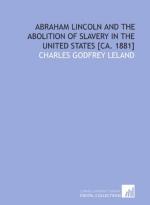|
This section contains 5,448 words (approx. 19 pages at 300 words per page) |

|
SOURCE: Paul-Emile, Barbara Taylor. “Samuel Taylor Coleridge as Abolitionist.” ARIEL: A Review of International English Literature 5, no. 2 (April 1974): 59-75.
In the following essay, Paul-Emile discusses Samuel Taylor Coleridge's transformation from liberal abolitionist to a conservative wary of emancipation's effect on the British social hierarchy.
As a young man, Samuel Taylor Coleridge was deeply concerned about slavery; his writing on the subject can be divided into two distinct periods. The first, extending from 1792 to 1798, could be called his more liberal abolitionist phase. During this time he expressed distress over the very existence of slavery and publicly lectured against it. The second phase began in 1808 after a silence of ten years. In that year he wrote a review of Thomas Clarkson's new book on slavery for the Edinburgh Review. By this time, his liberalism had been moderated into paternalism, and his main concern became the “civilizing” of Africans. By 1833, when...
|
This section contains 5,448 words (approx. 19 pages at 300 words per page) |

|


